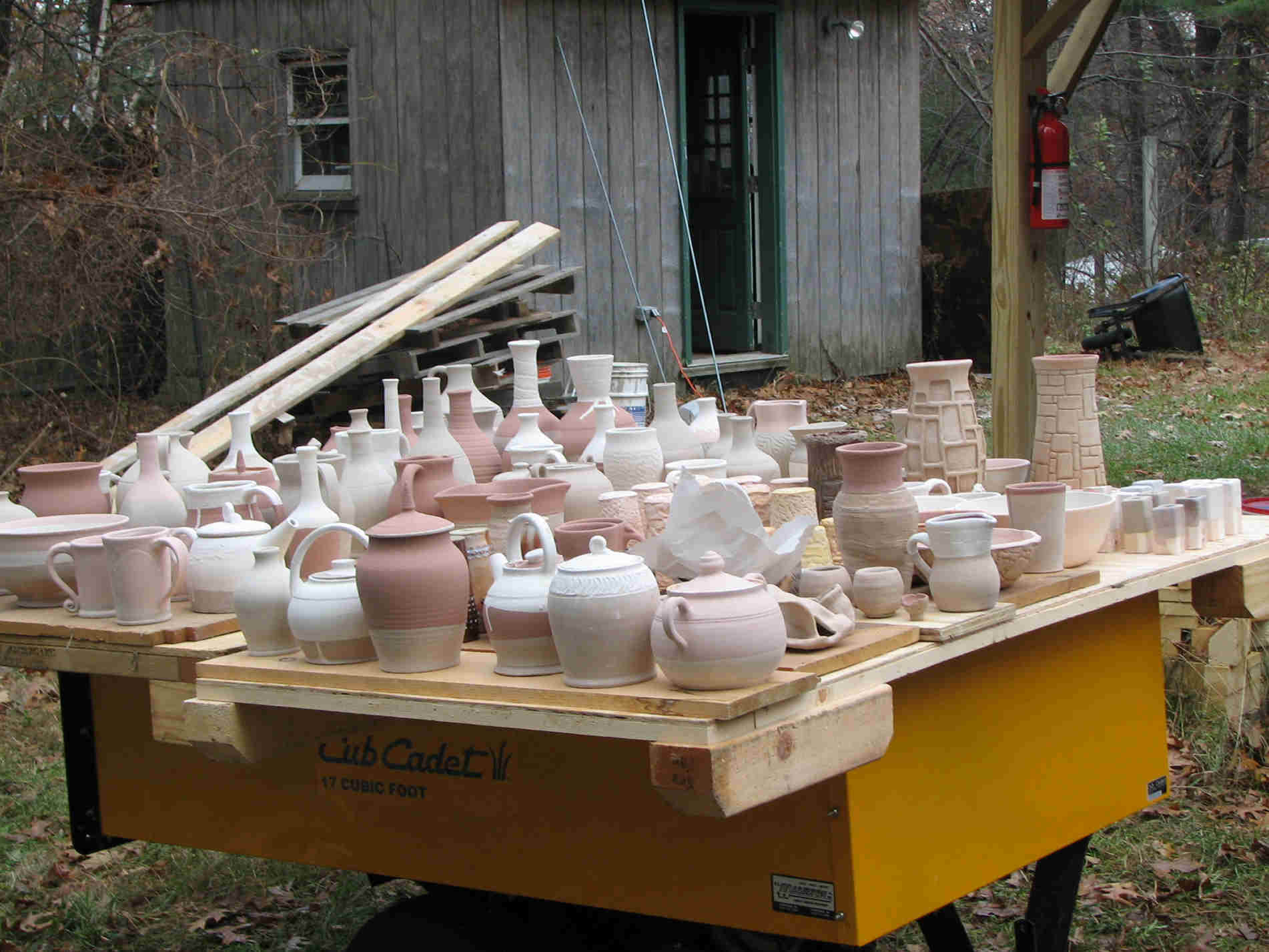
Green pots
Green pots, covered in glaze, await the kiln. It helps if it's not raining- loading in bad weather can not only damage the unfired glaze, but being all cramped up in the kiln is about as comfortable as sleeping in a damp cave.

Wadding
Here I am sticking "wadding" on pots. Because the ash forms a glaze on pots, little balls of crumbly clay are needed to keep the pots from sticking to the floor or lids from being permanently stuck shut. My wadding recipe:

Stack of pottery
Refractory shelves (mine are nitride bonded silicon carbide) are set on posts, then more pots and posts, etc. There are 2 problems with this picture: the pots are not stacked nearly tight enough in the bottom, and I loaded one side first (rather than the back first). In my kiln, creating the right restriction to air flow is important to evening out the heat flow- so the pots should be stacked the same across the ware chamber.
Notice the colored "cones" at the bottom right. They melt at different "heat work". This is how we judge when pottery has been heated enough. These are placed high and low, on both sides of the kiln, and viewed through "spy holes".
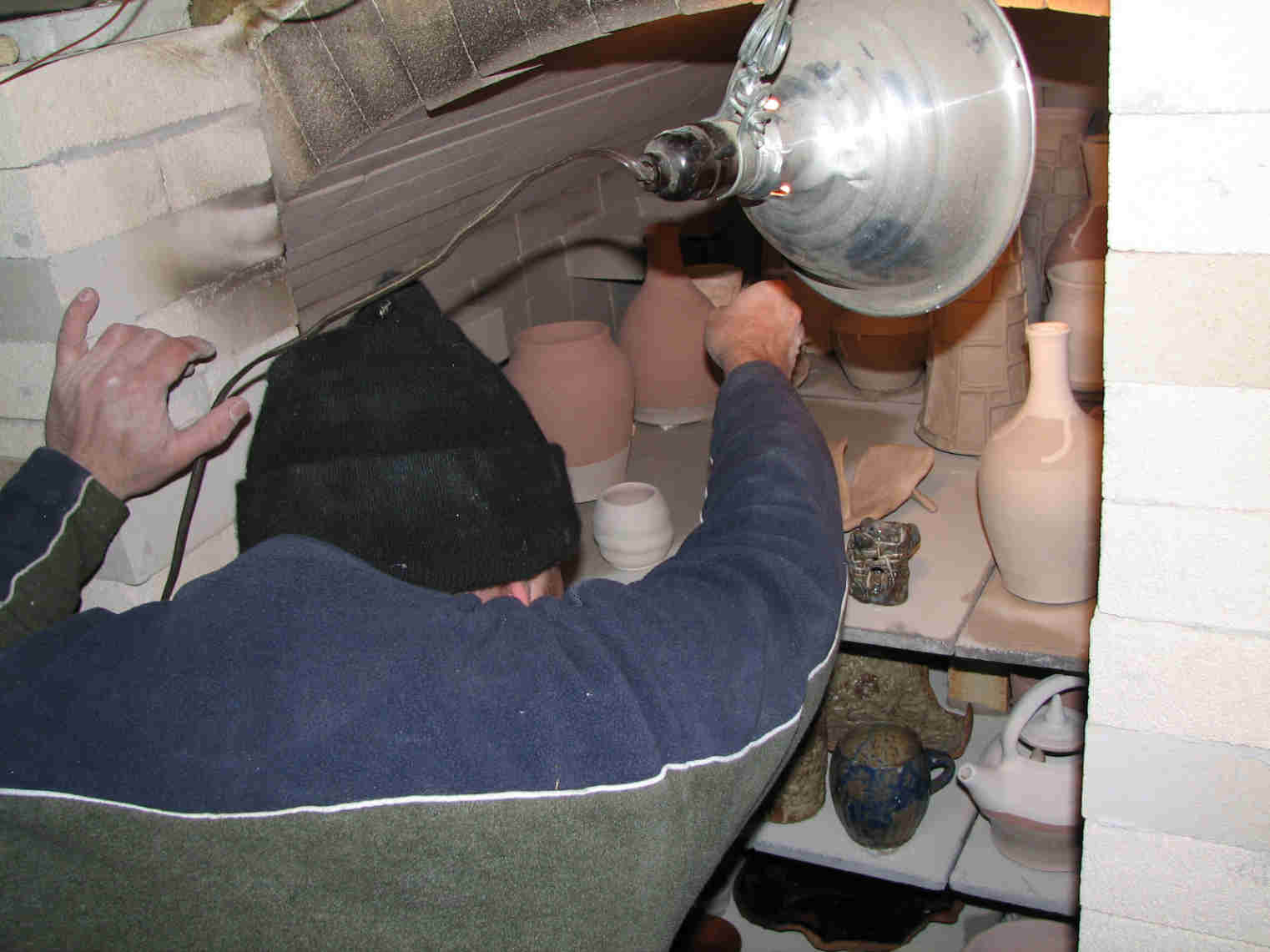
Reeeeaching
Loading requires a nice long day for a couple/few people. I think this one was 14 hours- uggh. Here I am trying to place pots in just the right way, anticipating where flame and ash will hit them (my being vertically challenged doesn't help here).
I read a quote somewhere about this being the only form of art where the last part takes place on the other side of a brick wall, so you have to do what you can while you can! That last little thing for the pot is fun to do, but we all get grumpy when we're cold and tired.
When it's full, we build a brick wall over the chamber opening to close it off.

Lighting
Pots, especially if they have not been "bisque" fired, need to be warmed very slowly. If the fire is too strong, then water in the clay can cause the pieces to explode. It doesn't only break one pot, but little pieces will get in other pots, stick in the glaze when it melts, and ruin them.
Ask me how I know about that.
The fire is started outside the firebox and the kiln is warmed and held at 200 F for several hours to dry the kiln and pots before the fire is built up.

Kiln front
Here you can see the "secondary air" inlets (closed off with bricks), as well as the "mouse holes"- which allow air into the floor of the firebox to burn down a bed of coals that might otherwise get too big and block the flame.
You can also see the shelves waiting to be used, and the form that was used to hold the bricks up while I made the arch over the ware chamber. Shamus is there to direct all activities... until he gets too cold.

Inside the firebox
You're looking at the "throat" in the firebox. Wood is added from the top of the "Bourry Box" style firebox, and air is drawn through the wood stack. The fire in this box burns "upside down"; any ash produced gets sucked into the firebox as it falls off the wood.
A word about design- most kilns have a "step" going up from the firebox to the ware chamber. This directs flame upward to even out the heat. My kiln doesn't have one- the effect is that I get a lot more ash effect on pots lower in the kiln, but I have to really stack pots in tight in the kiln bottom to even out the heat.
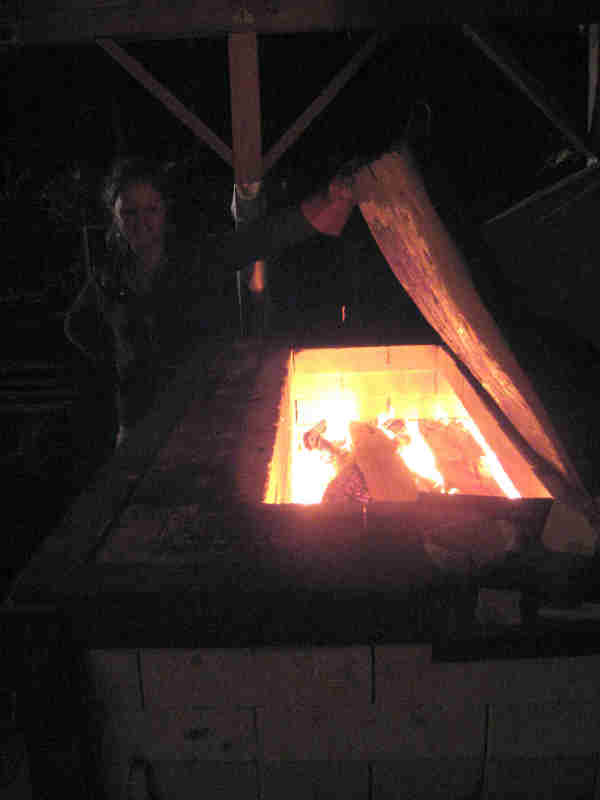
Firebox
Here's the firebox opening (you can't see Rachel the pottery hippy holding it open).
A word about pottery hippies If you have a kiln with some extra space, then go get yourself some pottery hippies. First they'll help fill it up, then they'll drink macha tea and form a drum circle, or whatever, while you get a few hours of much needed shuteye.

Hammock
Here's my buddy Dave sleeping in his hammock next to the chimney. Dave woke up while it was about 130 F back there. "Dude- why's it so sticky out here?". Gee- I dunno Dave.
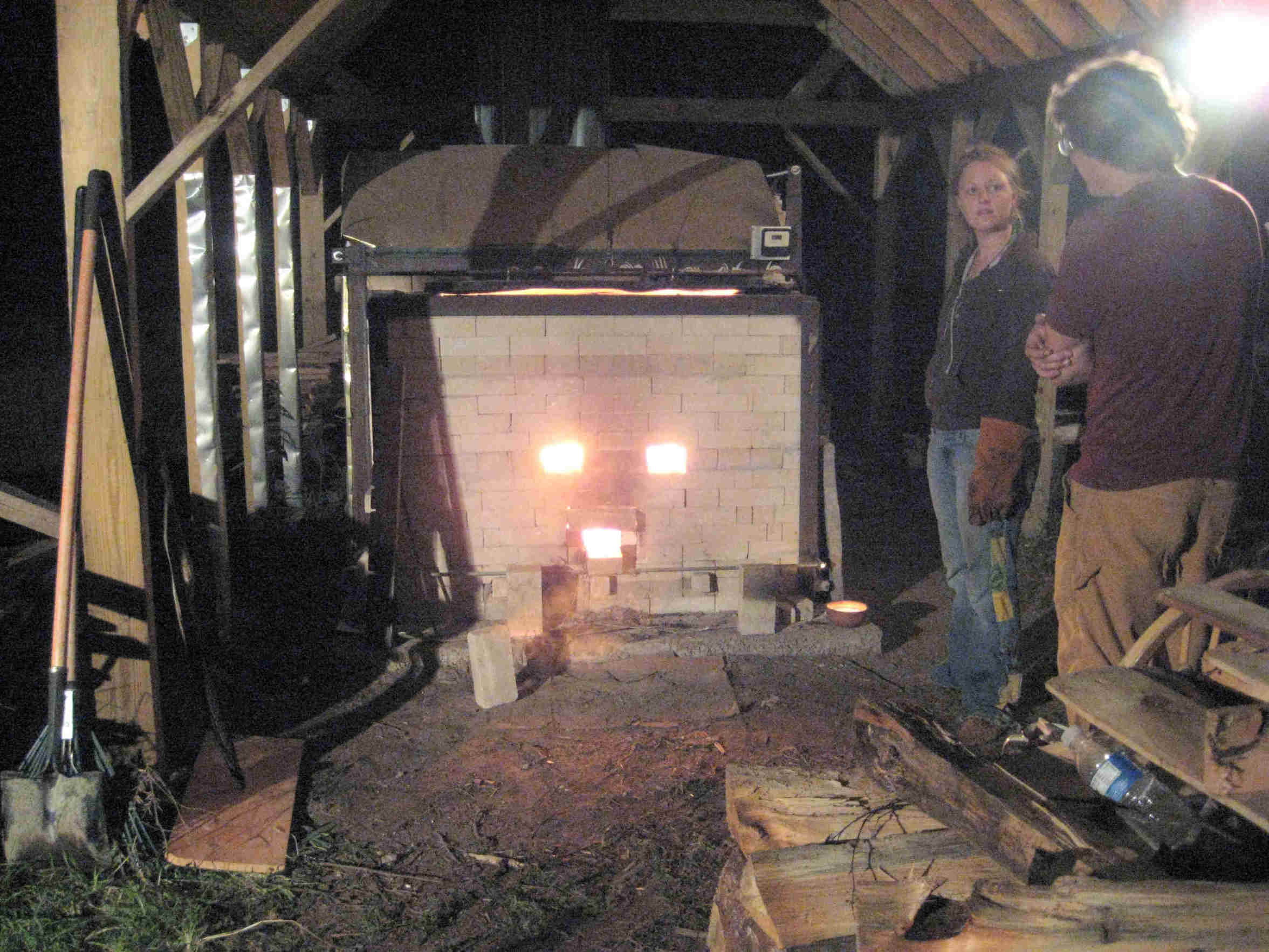
Rachel and Mike
Staying up, burnin stuff, talking about music festivals.
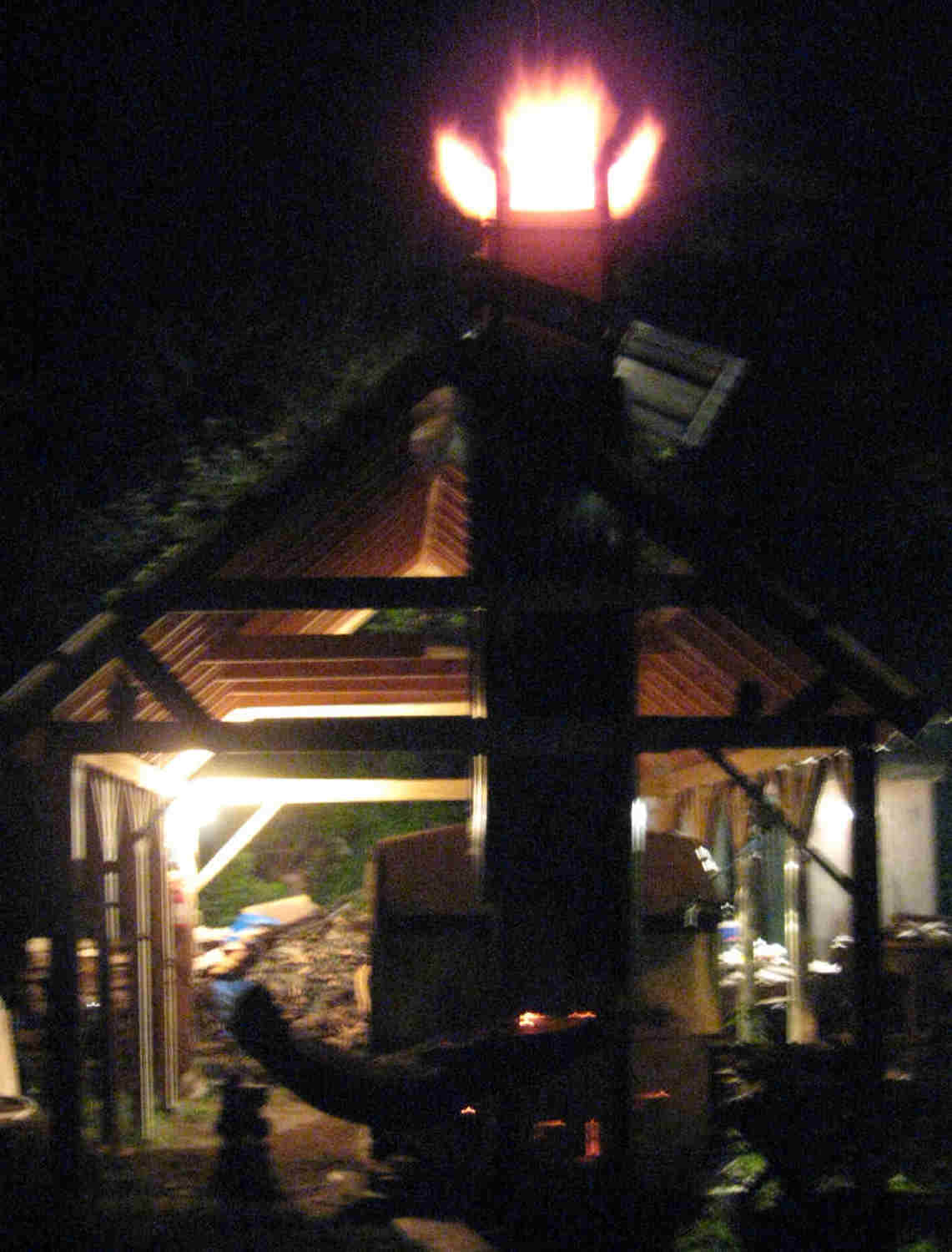
Top fire
The chimney is 15' high, and flame blows 3' out when we're at top fire. It lights up my yard pretty well. Last firing, someone called the fire department because he thought we had a chimney fire in our house. The firemen and police actually thought it was very cool and came up to see it.
Everyone like fire, right?
We have fired the kiln in as few as 18 hours, or as many as 36 hours. In that time we burn up to 2 cord of wood.